I Hit 60 and These Daily Habits Keep Me Fit and Feeling 20 Years Younger
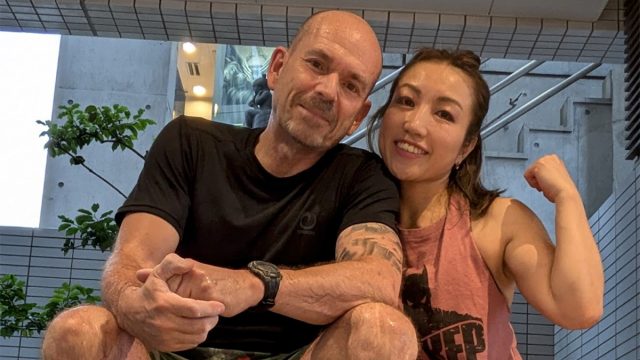
One of the frequent questions people ask me as a Nutrition Coach is what I personally do to stay fit and healthy.
Hitting 60 was a big deal. I could see it coming, yet until that number slapped me in the face, it kind of felt like I'd be in my 50's forever while still imagining I was 40.
I suppose that's how all of us feel at the end of every decade of our lives, but I can't seem to recall feeling like this when 39 turned to 40, or 49 to 50.
That said, staying fit and healthy has been a priority of mine for a long time. My wife is 16 years younger than I am and I intend to not only be around for her well into old age, but never to become a burden because of decrepitude.
Everyone has their own unique routine. There is no "one size fits all."
There are some routines that will shorten your life and contribute to poor health and eventual illness. As a nutrition coach, I rarely see someone who isn't aware that their habits are harming their health.
However, there are some basic principles that anyone can benefit from. My own routine boils down to a few basic habits that keep me fit, healthy, and happy. Some might seem too simple, but I promise you that if you follow these basics, you'll enjoy the benefits.
None of these actually take much extra time.
But if I removed any single one of these 20, the lost benefit would be substantial.
Let's go!
1. Water. I Drink Lots of Water
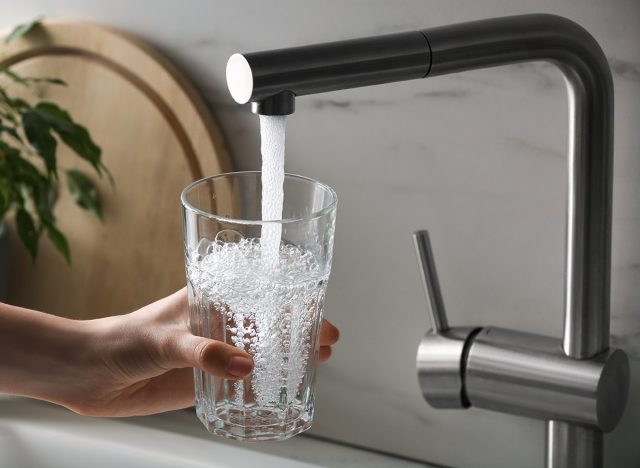
I drink water first thing in the morning when I wake up. I add a squeeze of lime juice (or lemon), a pinch of pink salt, no tequila please.
Then I sip my way through the day. A bottle of water here. A glass of water there. An iced coffee or two or three.
That first glass of water in the morning, though, is a real game changer.
I've been sleeping for at least 6 hours, possibly more. I had my last water of the previous day 3 or more hours before I went to bed. So guess what? When I wake up in the morning, I'm dehydrated. You likely are too, but you just don't realize it. So the first thing I do after waking up is have a big glass of water. That lime juice and pink salt I mentioned provides much-needed electrolytes.
Now I'm hydrated. This benefits every tissue, every cell in my body. Want great skin as you get older? Water is the answer.
2. I Eat Breakfast. You Should Too
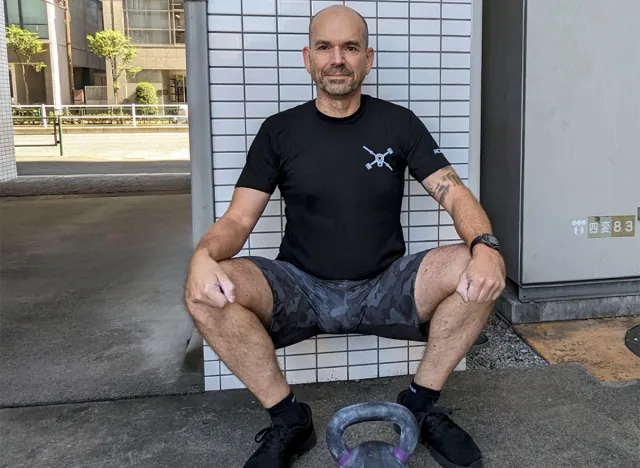
Eat breakfast. It really is the most important meal of the day. I make sure it's protein-dense: an egg or some yogurt does nicely. Some days, particularly when I'm going to train, I'll just have coffee with some collagen and a dab of ghee mixed in. I don't like the heavy feeling of any breakfast too close to a workout, but afterwards, it's time for the protein-dense breakfast. The protein keeps me going and feeling satiated until lunch time and guys, if you're over 40, this habit is going to help mitigate age-related muscle loss.
Try it and you'll see. It makes a massive difference.
3. I Get Enough Protein in Every Meal
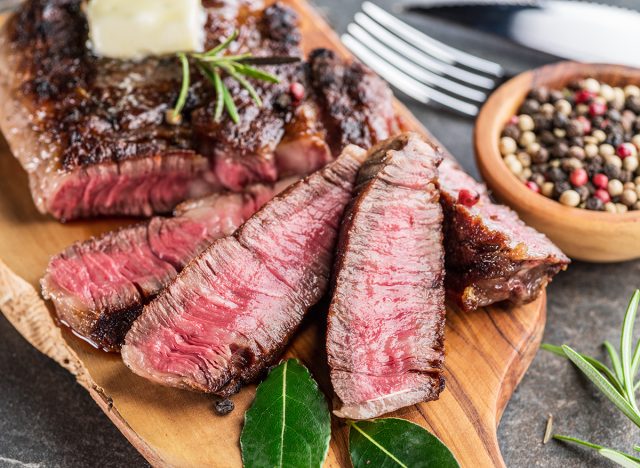
I make sure that every meal has 30-50 grams of protein. You don't need a scale or anything like that. You can get that 30-50 grams of protein just by using the hand portion method. Look at the palm of your open hand. Now take two of those palms of any protein. That's what's on my plate at lunch and supper. This has kept me from losing muscle mass as I age. It keeps me feeling satisfied for hours after eating so I can avoid sugar cravings and snacks.
Protein is essential for a multitude of body processes, particularly building and retaining muscle mass, which for older guys (over 40? I'm talking to YOU) is a really big deal. Every decade after 40, it becomes harder to retain muscle mass, so protein intake is paramount.
That's been a real boon to keeping me healthy and fit.
4. I Eat Fruit and Vegetables in Every Meal
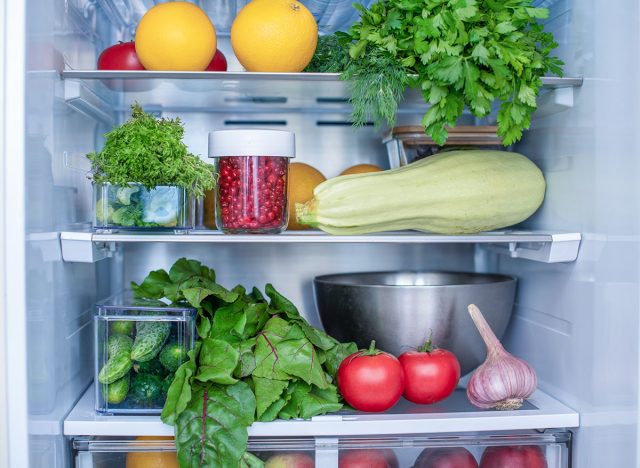
Nope, I'm not a vegetarian or a vegan. I eat meat and eggs to get the protein that I noted in the previous point. But every meal has two or three handfuls of vegetables in it. Breakfast? There's a piece of fruit or two in there somewhere.
Adding a piece of fruit or a vegetable to any meal is one of the simplest, healthiest, and most effective ways to level up your meals with one small action.
Try it and you'll reap the benefits in better weight management, better digestion, and better overall health.
5. I Rarely Eat Junk Food
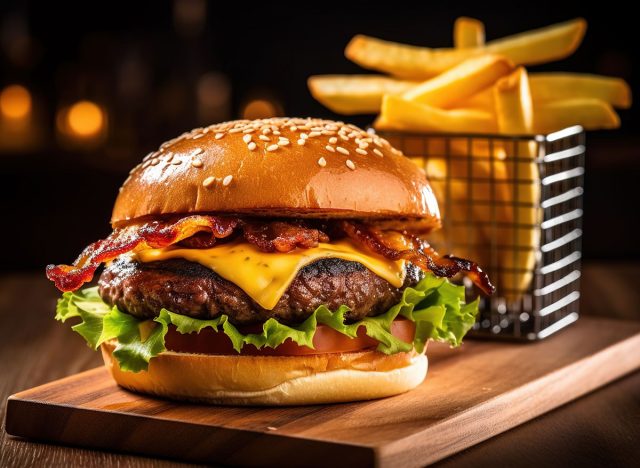
So here's the thing: once in a while, we all have a burger and fries, or maybe some nachos. Who doesn't? But I don't make it a daily or even a weekly habit. It's generally once a month or less. Right now as I write this, the last time I had a burger and fries was 3 months ago. And it wasn't a crappy burger from McDonald's. It was a decent grass-fed burger from a place in Tokyo my wife and I like to visit occasionally. Potato chips? I recall it might have been half a year ago. Once you get out of the habit of feeding the junk food urge, you won't look back. Your body will thank you for it.
6. I Move. A Lot. You Should Too
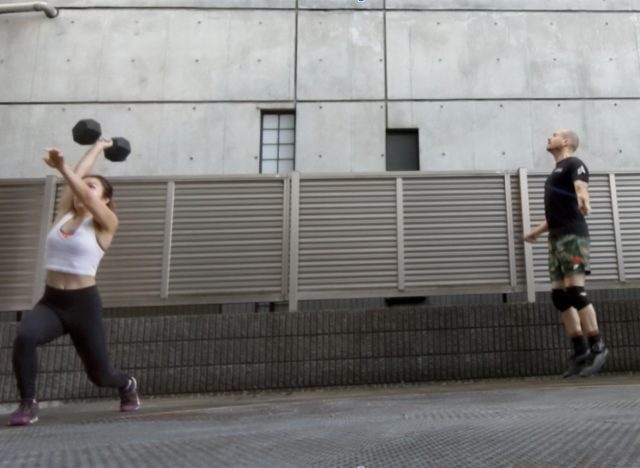
Show me someone who doesn't walk much and who gets very little physical activity and I'll show you someone who is sliding into decrepitude as they age. This isn't complicated. We evolved in a state of daily movement. Move more, live longer. Move more, and experience a better quality of life.
Since my wife and I live in Tokyo, like other Tokyo-ites, we don't drive, we walk and take the subway. That 10,000 steps you've heard of? It's not much more than the basic minimum that we need to do just in our daily routine. Walk at least half an hour a day. That's the bare minimum. Add more activity until you actually start to FEEL stronger and healthier. Don't like to exercise? That's a little voice inside your head lying to you. It's similar to disliking a food you've never tried. Give it some time and you'll soon realize how much fun it can be!
7. I Have Solid, Restful Sleep

Yep, if you want to be physically healthy and ensure better cognitive function as you age, you have to get sufficient restful sleep, so I try to get a minimum of 7 hours a night. If you're someone who survives on 4 or 5 hours of sleep nightly, over a long period of time your health will suffer. That's a fact. Insufficient sleep increases appetite and adversely affects cognitive function over the long-term.
Nutritionally, deep, restful sleep reduces appetite on the following day, making weight management far easier. Fact: a continual sleep deficit makes it more likely you'll gain weight over the long-term and have trouble losing it.
8. I Try to Wake Up at the Same Time Every Day
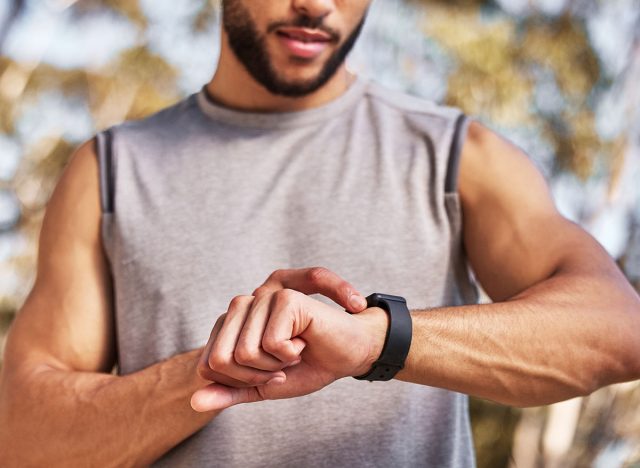
You might be thinking "why not sleep in on the weekends?"
The fact is that if you're getting sufficient sleep throughout the week, then you won't want to sleep in on the weekends. You won't feel like it. I naturally wake up at the same time every day anyhow. But if you have a wildly different sleep schedule on weekdays and weekends, you'll be in a perpetual state of sleep deprivation because your body has to work hard to re-adapt to a different circadian rhythm on weekdays and weekends.. So I wake up at more or less the same time, 7 days a week, with a clear head and more energy.
9. I Drink. Very Little
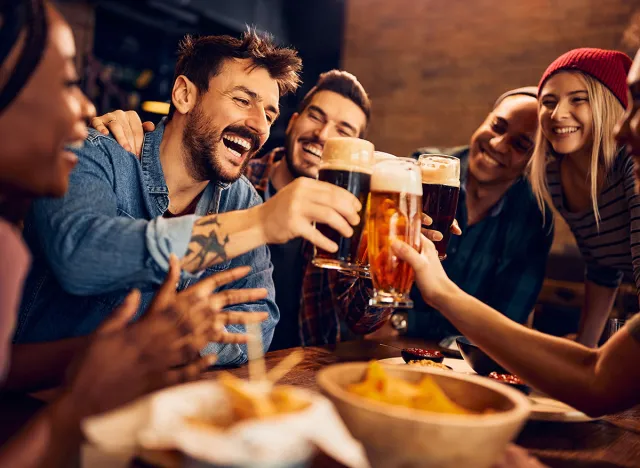
The wonders of punctuation. With or without the period, I drink very little alcohol. That one or two daily glasses of red wine that the media has been crowing about as a "healthy habit" for years? Well, there may be some health benefits, but the most reliable research says that the minor benefits are far outweighed by the negative effects on our health, particularly on our brain function. Daily consumption of alcohol has been shown to have a deleterious effect on our brains, and it isn't doing our liver, heart, or skin any favors either.
I like a glass of wine or a cocktail as much as anyone, but keep it down to a glass or two monthly. There is zero health benefit to alcohol consumption.
It reminds me of a saying I heard a few years ago that should resonate with anyone who enjoys a few-too-many drinks: "drinking is stealing happiness from tomorrow."
And here's the final thing that makes a HUGE difference in my health and happiness:
10. I Spend Time with My Wife
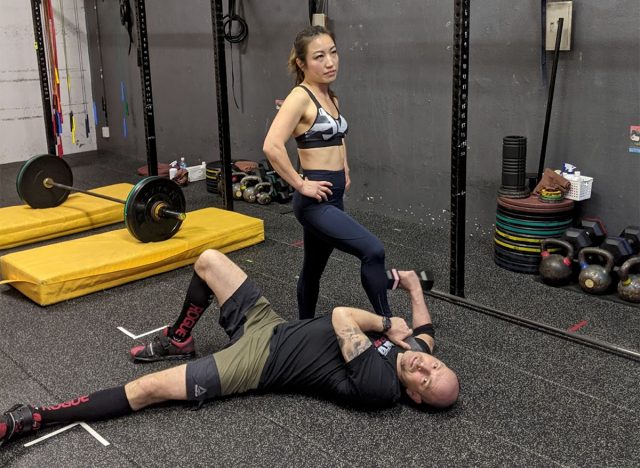
You might be thinking, "don't we all? That's a no-brainer, Mark." Well, maybe not. My wife and I spend real quality time together, daily, even if it's just for a short while. Whenever we can, we have meals together. We don't watch TV while we're eating and we don't scroll through our phones at the dinner table.
Sometimes we work out together, sometimes not. But we try to do what we can to enjoy each other's company.
We laugh. We joke around. I tell my stupid jokes (and sometimes she even laughs at them). Sometimes. We like to laugh at things instead of letting setbacks get us down. Laughing feels good. My Granddad used to laugh and make light of any awful thing that happened, and my Grandma would say "Joe, how can you make a joke about this!!? What's wrong with you!?" He'd reply "if I didn't laugh, I'd have to cry. Might as well laugh."
11. I Practice Non Sleep Deep Relaxation

Meditation? Nope. I tried many times when I was younger but I just can't do it. But NSDR is something that I got turned on to from Dr. Andrew Huberman. Just 10 minutes a day of his mindfulness "meditation" exercise has been a game-changer for my stress levels and relaxation. It's like a daily tune-up for my brain, helping me wind down in the evening and get into a state of deep relaxation before bed. A short deep relaxation routine works great for me. No downside, all upside.
12. I Lift Heavy Things
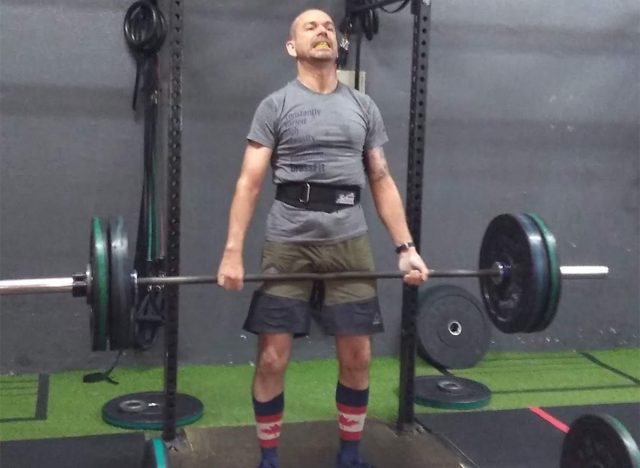
Strength training isn't just for bodybuilders. I might not be the strongest guy on the block, but at 60, I make sure to strength train at least three times a week. It's not about getting big muscles (though that's a nice side effect), and I don't have a six-pack; it's about maintaining bone density, boosting metabolism, and staying functionally strong. I made this a part of my routine in my early 30's, but it's never too late to start, and not starting, in my opinion, is one of the biggest mistakes older guys can make. Trust me, being able to carry all my groceries myself into my Golden Years is worth it, and I'll never worry about decrepitude and becoming a burden to my family.
13. I Take Cold Showers
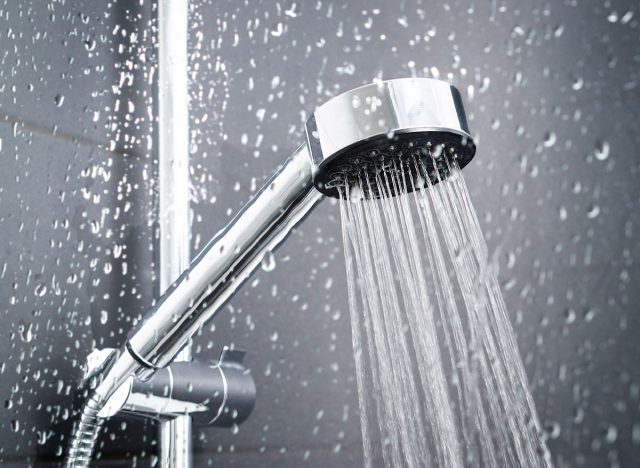
You might have heard a lot about people sitting in ice baths every morning (Joe Rogan comes to mind), but for many, including me, it's just not doable, whether it's lack of space, or just lack of desire to sit in a tub full of ice. But a cold finish to a shower? No problem. Ending my hot shower with at least 30 seconds of cold water seems to boost my energy levels and clear my head. It's like a cup of coffee for my body, minus the jitters. Plus, it's great for circulation and may even boost the immune system. Show me the downside. There is none. Once you get used to it, NOT ending a shower with cold water will feel like the job is unfinished.
14. I Practice Intermittent Fasting
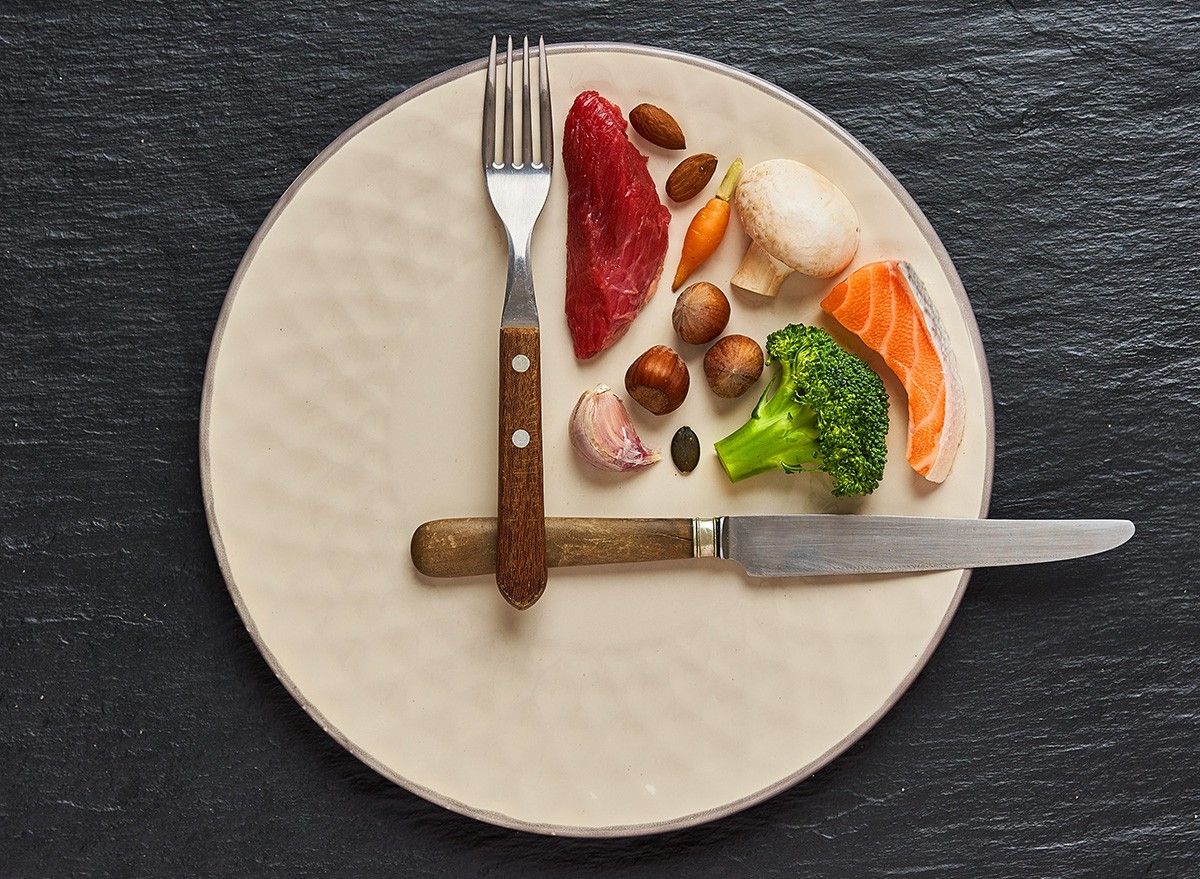
A few days a week, I extend my overnight fast to 16 hours. It's not about starving yourself; it's about giving your digestive system a break and potentially triggering some cellular repair processes. I find it helps with mental clarity and makes me appreciate my meals even more. The beauty of IF is it can be done for several days at a time, one week, or not at all the next week, whatever fits my schedule. On non-Intermittent Fasting days, I maintain the same healthy diet. Intermittent fasting isn't a magic bullet to fix all health problems, but it's definitely a useful tool to bring some awareness to the ritual of eating.
15. I Take the Stairs
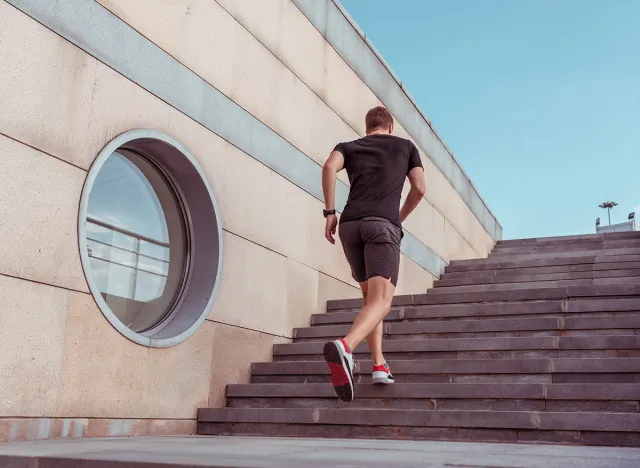
Escalator? No thanks, I'll take the stairs. Tokyo is full of escalators and elevators, but whenever possible, I either take the stairs or walk up the escalator – no standing, please. It's a simple way to sneak in some extra movement and leg strengthening throughout the day. Who needs a Stairmaster? Plus, it's usually faster than waiting for the elevator and definitely better than standing immobile on the escalator.
16. I Stretch Daily

Flexibility is often overlooked, but it's crucial for staying mobile and pain-free as we age. I spend about 10 minutes at the beginning of each day doing some basic stretches, whether I'm going to work out or not. It's like WD-40 for your joints – keeps everything moving smoothly. And by the way, you don't have to be a yogi to engage in some movement that improves your mobility and flexibility. I move within a pain-free range of motion despite knee, hip, and shoulder surgeries. This is a real quality-of-life practice. Do it and feel the benefits.
17. I Read Before Bed

Instead of scrolling through my phone, I wind down with a good book. It helps me relax, improves my sleep quality, and keeps my mind sharp. Reading seems to be one of the great pastimes of our society that too few people engage in regularly. Reading is all up-side, no down-side. Big-brain stuff in a world full of brain-shrinking digital activities. Plus, it gives me great material for dinner conversations that don't revolve around the latest cat video.
18. I Practice Gratitude

Every day before my nightly reading, I write down three things I'm grateful for. It might sound cheesy, but focusing on the positives is a great way to end the day, especially if the day was, shall we say, "not optimal." It doesn't have to be complicated or lengthy. Keep it short and sweet. It's another way to be mindful. And let's face it, at 60, I've got a lot to be thankful for – including still being able to touch my toes! Seriously though, things could be much worse, and that's something to be grateful for.
19. I Stay Socially Active
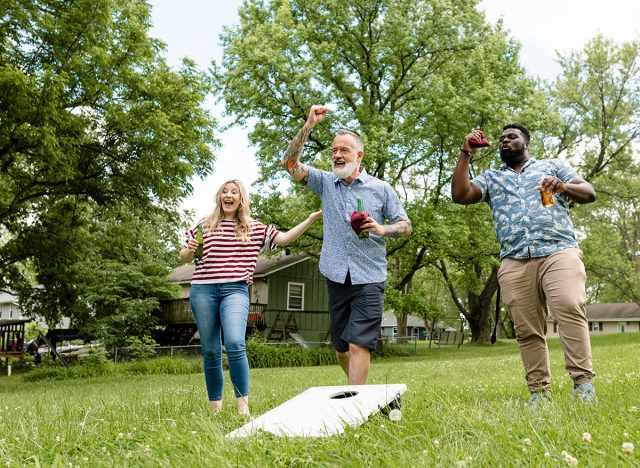
I make an effort to connect with friends and family regularly. Social connections are vital for mental health and cognitive function. You know what they say – "No man is an island." Well, at 60, I'm deeply conscious of the value of the friends I've stayed close to over the years and occasionally making new ones. Being active in the CrossFit community in Tokyo has been a real advantage, but anyone, with some effort, can not only maintain the friendships and community they've got but actively expand it. Staying socially active isn't just about having fun (though that's a big part of it); it's about maintaining cognitive function, emotional well-being, and even physical health. Social connection is vital for well-being and deep health.
20. I Learn Something New Every Day

Whether it's a new word (in English or Japanese), a historical fact, a new command-line prompt (yes, I'm tinkering with Linux. Crazy!), or nutrition and training information to help my clients improve their lives, I make sure to learn something new each day. This includes skill acquisition, which is vital for my nutrition coaching and strength programming while keeping my brain plastic.
Growth doesn't stop at 50 or 60. Use it or lose it. The brain is like any muscle, so it has to get frequent exercise to keep it functioning at its best.
Remember, it's not about being perfect with these habits. It's about consistency and making small, positive choices each day. Before you know it, you'll be the 60-year-old running circles around the 30-year-olds at the gym!
RELATED: Eat More of These 10 Foods to Lose Weight Fast
A Final Word
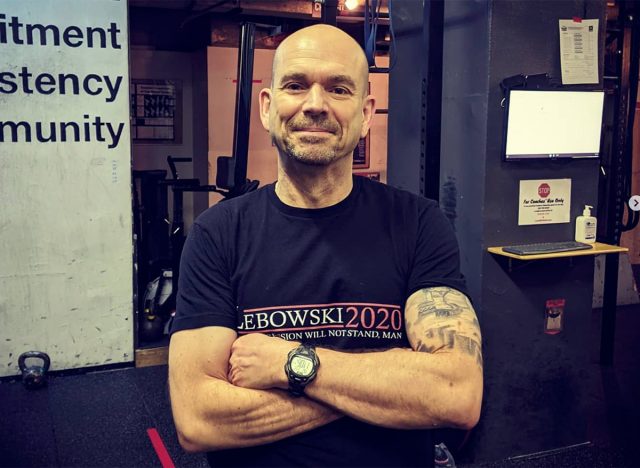
When you look at this list of 20 daily habits or actions that keep me fit, healthy, and feeling younger, none of them stands out as anything exceptional. Yet I'll wager that if you go down the list and check off the ones you practice, you'll find something doesn't quite measure up to the level you'd like to be at. There's one crucial habit that is an element of all of them, and that's mindfulness. All of these habits come down to mindfulness. Mindfulness is where the magic is. Be mindful and these 20 habits will come easily. And if you enjoyed this article, take advantage of these 20 Superfoods for People Over 50.




